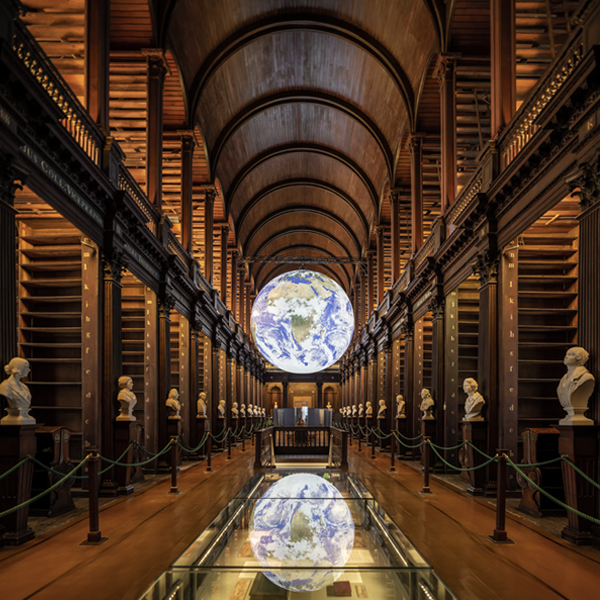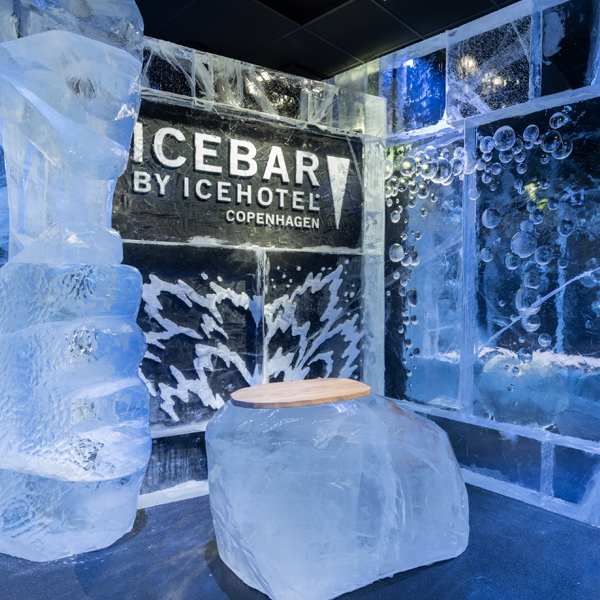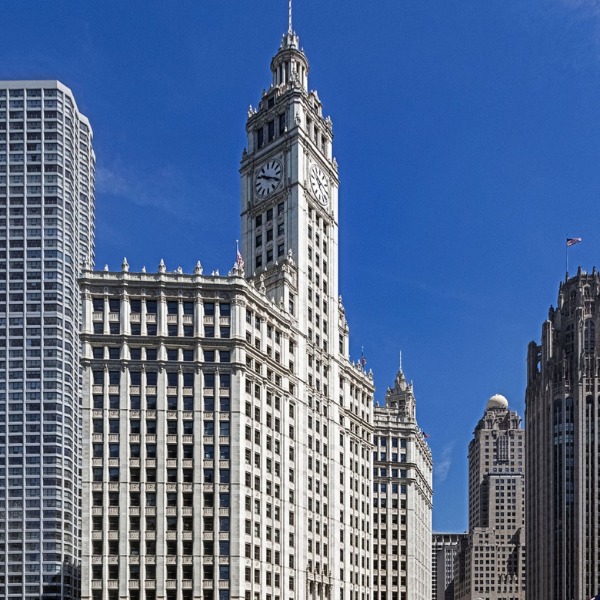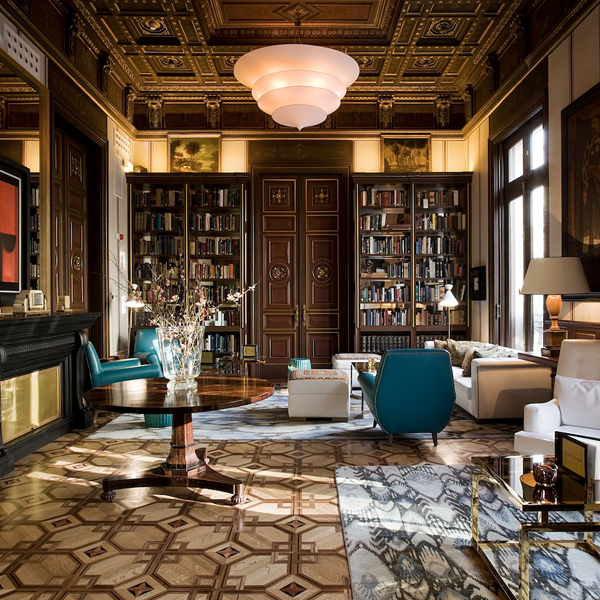
Aachen Cathedral. Aachen, Germany. (Left: Stock Photos from r.classen/Shutterstock | Right: Frans Berkelaar [CC BY-SA 2.0], via Wikimedia Commons)
Often cast in bronze to stand up well against wear and tear, these miniatures are a vital source of information for the blind and visually challenged. These tactile models also include information in braille to help more people read about individual monuments or even entire city centers. One of the most famous creators of these models is German sculptor Egbert Broerken. Using the lost wax method, over the past 20 years Broerken has cast more than 120 city centers and individual monuments across Europe.
It typically takes Broerken eight to ten months to complete a model after taking extensive photographs and moving through the casting process. The resulting gold bronze sculptures, which are installed close to the sites they describe, unlock a whole new world for the visually impaired.
“When blind people finger their town for the first time it is a completely new experience for them,” Broerken writes. “Before they could feel the walls of the town but only the model gives them a chance to understand the dimension of the town they live in.”
By bringing architecture to life on a small scale, visitors can take a walk through the city using their fingertips and marvel at the incredible detail they might have otherwise missed. Of course, new technology like 3D printing has made scale models more affordable and so tactile models have become increasingly commonplace. So the next time you walk past one of these beautiful miniatures, take a moment to consider its important role in unlocking the details of the world's greatest architecture.
Across the world, bronze scale models of famous monuments help open up architecture to the visually impaired.

Dom St. Peter. Worms, Germany. (Photo: Immanuel Giel [Public domain], via Wikimedia Commons)

Dom St. Peter. Worms, Germany. (Photo: Stock Photos from Bildagentur Zoonar GmbH/Shutterstock)

Matthias Church and Fisherman's Bastion. Budapest, Hungary. (Photo: Einemnet [CC BY-SA 4.0], via Wikimedia Commons)

Matthias Church and Fisherman's Bastion. Budapest, Hungary. (Photo: Stock Photos from LostintheCity/Shutterstock)
They often include braille descriptions to help the blind orient themselves.

Market Square. Poznan, Poland. (Photo: MOs810 [CC BY-SA 4.0], via Wikimedia Commons)

Market Square. Poznan, Poland. (Photo: Stock Photos from taranchic/Shutterstock)
German sculptor Egbert Broerken has created over 100 of these bronze models over the past 20 years.
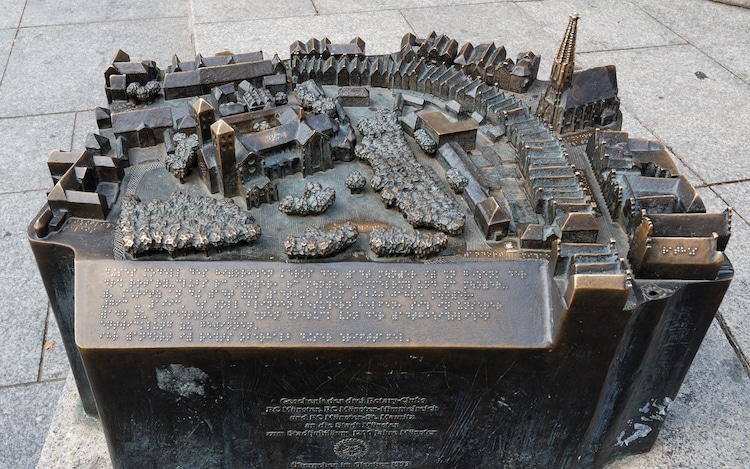
Photo: Mbdortmund [GFDL 1.2], via Wikimedia Commons

Aerial view of Old Town. Muenster, Germany. (Photo: Stock Photos from 360degreeAerial/Shutterstock)
Related Articles:
Archeologist Spends Over 35 Years Building Enormous Scale Model of Ancient Rome
Designers Use Aerial Scans to Turn Any Street in Chicago into Detailed 3D Models
LEGO Designs Braille Bricks to Help Visually Impaired and Blind Children Learn How to Read
Masterpieces Turned into 3D Printed Sculptures for Blind and Visually Impaired People to Enjoy












































































